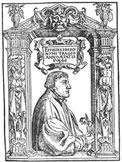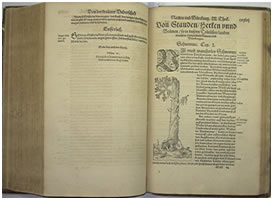Hieronymus Bock (1498-1554)

Bock (Latinized Tragus) was a German botanist, physician, and churchman. He began the transition from medieval botany to the modern scientific worldview by arranging plants by their resemblance or apparent relationship.
The details of his life are sketchy. In 1519 he inscribed at the University of Heidelberg. He worked from 1523 to 1533 in Zweibrücken and then accepted a canonry in Hornbach. He became a follower of Martin Luther and was forced to leave Hornbach in 1550. He then served briefly as personal physician to the Duke of Nassau. He returned to Hornbach as a Lutheran minister in 1551, and stayed there up to his death in 1554.
The first edition of his Kreutterbuch (literally "plant book") appeared in 1539 unillustrated; his stated objectives were to describe German plants, including their names, characteristics, and medical uses. Instead of following Dioscorides, as was traditional, he developed his own system to classify 700 plants. Bock apparently travelled widely through central Europe observing the plants for himself, since he includes ecological and distributional observations. His 1546 Kreutterbuch was illustrated by the artist David Kandel. In the wine world, Bock is noted for the first documented use of the word Riesling, in 1552
The genera Tragus (Gramineae, grass family) and Tragia (Euphorbiaceae, spurge family) are both named after him.